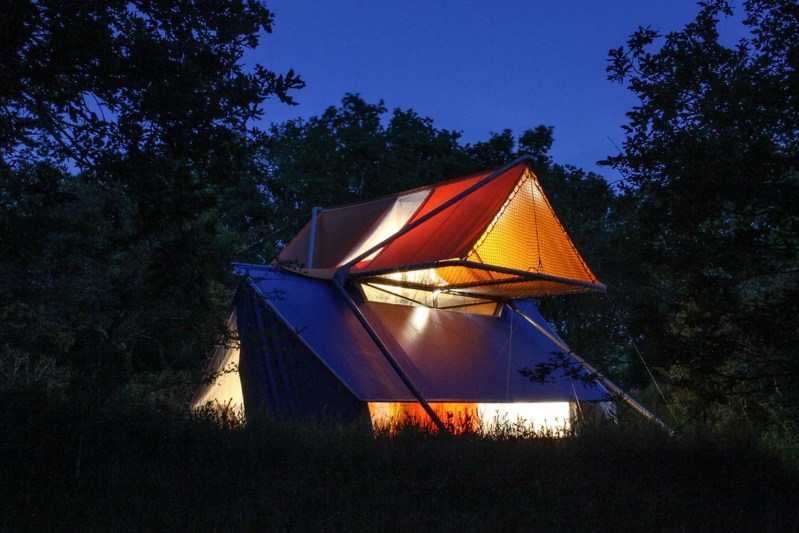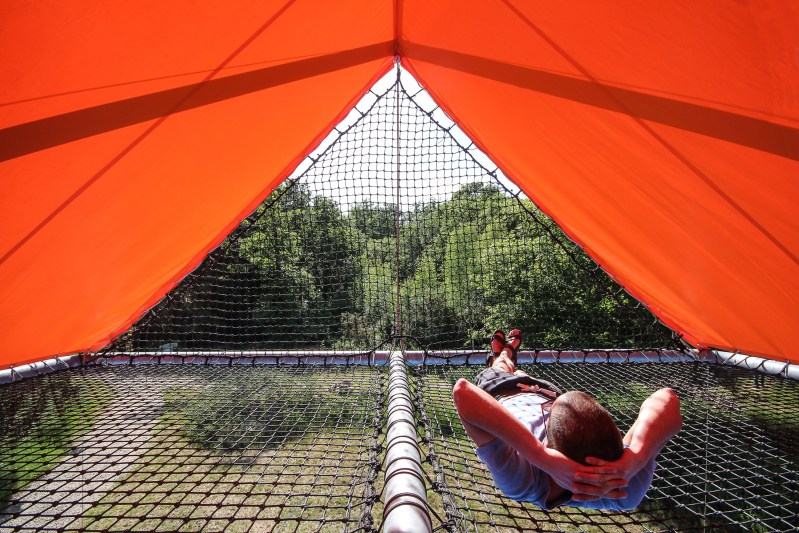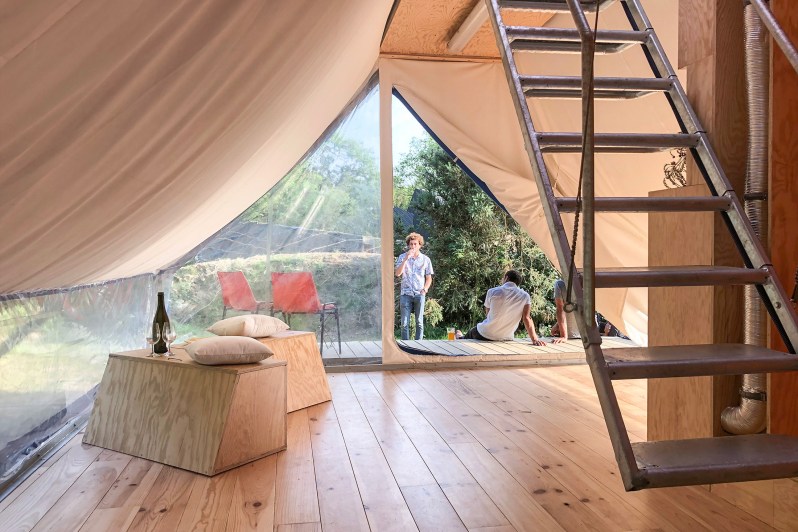
Camping technology has advanced more in the last few decades than in the previous few centuries. The general trend has been toward faster, lighter, more portable gear. But, that hasn’t stopped one French company from thinking much bigger — literally — in the form of an extreme tent that is, to the best of our knowledge, the world’s first two-story tent.
The SuperPausée is described as a “macro tent,” and it’s unlike any we’ve ever seen. From the outside, the bi-level structure is clearly two stacked tents. The downstairs level spans an impressive 165 square feet with room for up to five. That living area includes a basic bathroom, a covered terrace, and a removable textile partition for privacy. The best part: It’s heated year-round. Up the ladder to the second floor, guests will find the piece de resistance — a small, dedicated bedroom, plus a “trampoline-style” outdoor balcony.

This is obviously a semi-permanent design that no one in their right mind would lug into the backcountry. But, the entire affair uses lightweight steel tubing that’s easy to relocate when necessary. The tent’s design was heavily inspired by traditional shipbuilding and boat rigging, including canvas walls, knots, Dyneema ropes, and splices. Its designers promise it assembles easily with a few helping hands, some flat wrenches, and a one-ton hoist. Like all proofs of concept, the realization of SuperPausée demonstrates what’s possible with some out-of-the-box engineering and modern technology. The designers call SuperPausée “an offbeat ode to camping, [that] plays with these codes through its geometry, its apparent lightness, its minimal imprint and its textile materiality.”

SuperPausée was designed by Collectif Vous (“You Collective”), who collectively boast skills in “architecture, furniture, design, scenography, art installations, signage, graphics, music, clothing, video, projections, fabrication, welding, carpentry, painting, assembly, and the like.” The French-born collaborative tinkers with unique, forward-thinking concepts, ultimately seeing them from drawing board to manufacturing.
You won’t find the SuperPausée two-story tent at your local REI, although the company will likely provide a custom build for the right price. Interested campers can, however, check out the only working model and several other unusual accommodation options at La Belle Folie hotel in Ploemel, France.
For something a little more portable and practical for ordinary camping, check out our roundup of the best camping tents.


